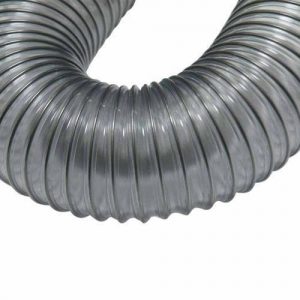For transporting the media, tubes and hoses are used. They are used both for industrial purposes and for private uses, such as gardening. You need to pick the right one (length, diameter, etc.) to make sure it suits your needs, even for basic applications such as gardening. It can become more complicated for industrial applications. In order to make an informed decision on choosing a hose or tube for your application, this article aims to give you all the available selection criteria. You need to choose the Best Flexible Hose Manufacturer.
Hoses appear relatively simple on the surface, and probably even interchangeable. In reality, hoses are multi-layered, specialized tools built and developed for particular applications. It depends on many main factors, including size, temperature, and compatibility and choosing the right hose fitting link, to determine which hose is suitable for your device.
Choose the Best Flexible Hose Manufacturer as the right hose keeps the process going forward cost-effectively and securely. The wrong hose could undermine the process, put workers at risk and compromise the bottom line, without you being aware of it sometimes. Hoses are used when it is not feasible to use pipes or tubes, usually to provide machine operation or repair versatility. The hose is made using layers of rubber and steel. The exterior is built to withstand abrasion. When designing the bend radius of the Flexible hose, careful consideration has to be given.
Table of Contents
Tips for choosing the best flexible hose
#1) Working Pressure
Flexible system pressure does not exceed the hose’s nominal working pressure. As they can be dangerous for a hose, keep a watch on the pressure spikes or peaks that surpass the rated working pressure.
#2) Minimum Burst Pressure
Burst pressures are pressures referred to in this catalogue intended solely for destructive testing purposes and design safety variables.
#3) Temperature Range
Keep the hose protected from any temperature inside or outside that exceeds the defined limits. When hydraulic fluids contain emulsions or solutions, be sure to check the technical details. Regardless of the hose temperature range, the fluid manufacturer’s recommended maximum operating temperature for any given fluid must not be exceeded.
#4) Fluid Compatibility
Fluid compatibility must be provided for the hydraulic assembly (tube, cover, reinforcement, and couplings). The right hose must be used because there are vastly different phosphate ester and petroleum-based hydraulic fluids’ chemical properties. Many hoses are compatible with one or the other but not all fluids. The Gates intense Heat G2XH hose, for example, is capable of handling phosphate ester and hydraulic fluids based on petroleum.
#5) Minimum Bend Radius
Do not bend or flex the hose to a radius lower than the prescribed minimum and do not expose the hose to stress or torque. This can put undue stress on the reinforcement and reduce the hose’s ability to withstand pressure exceptionally.
#6) Hose Size
The size of the hose (inside diameter) must be capable of handling the flow volume needed. Too tiny an I.D. will result in excessive fluid pressure and heat generation for a given work of flow, resulting in tube damage.
#7) Hose Routing
Use clamps to restrain, shield or direct the hose, as well as to minimize the risk of damage due to any unnecessary bending, whipping or collision with other moving parts or corrosives. Determine hose lengths and configurations that secure and provide leak-resistant connections from abrasion, snagging or kinking.
#8) Hose Length
In the event of any adjustments under pressure, hose assembly routing system vibration and motion, the hose’s length should include considerations of size.
#9) Hose Applications
For the application, pick the correct flexible hose. Suction applications (Gates GMV or G4H) and special fluid or high-temperature capabilities need particular consideration and a specialized hose.
In manufacturing facilities that deal with various kinds of gases, hoses are used. These are hollow and flexible tubes used as part of a method to pack dissolved gases such as acetylene and atmospheric gases such as oxygen and argon into cylinders or transport them. Therefore, in such facilities, the selection of the correct type of hose for a typical application becomes a critical element of protection. So, the role of the Best Flexible Hose Manufacturer comes here.
A common misconception is that, for any use, any versatile hose can be used. Different types of versatile hoses are actually built to accommodate the needs of various applications. This makes it incredibly necessary to pick the best hose to meet the needs of the mission you are attempting to accomplish. Depending on the industry, selecting the wrong hose could lead to safety risks and increased expenses and missed production time.
The above are easy-to-follow, but tested factors that have helped to minimize hose failures by filling plants and other gas-operating facilities. In addition to these factors, it is necessary for a reliable supplier and manufacturer of gas filling plants to source the hoses.
